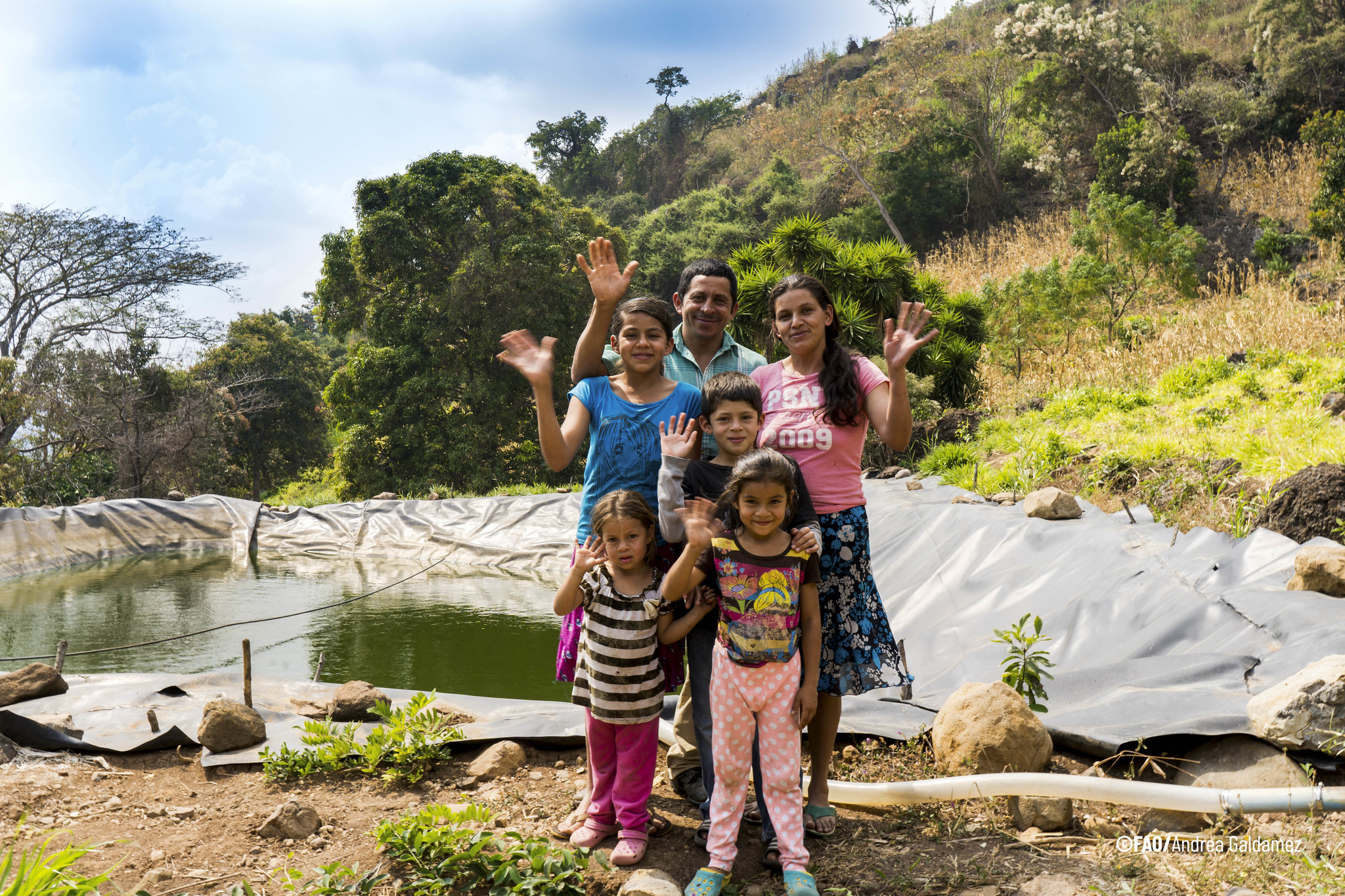
Dry Corridor
The Dry Corridor is a strip of territory that streteches across Costa Rica, Nicaragua, Honduras, El Salvador and Guatemala. More than 10 million people live there, many of whom are engaged in agricultural activities, especially the small production of basic grains.
It is an area highly vulnerable to extreme climatic events, where long periods of drought are followed by intense rains that strongly affect the livelihoods and food security of local populations. 80% of small producers live in poverty, and many people are forced to migrate.
- 7.5% suffers severe drought.
- 50.5% is classified as high drought.
- 42% suffers low levels of drought.
FAO’s Contributions: actions with countries and partners
FAO is working to change this reality and turn the Dry Corridor into a land of opportunities. Together with rural communities, youth, women and indigenous people, 26 projects are underway to transform their livelihoods and promote climate-resilient agriculture, through technological innovations, new agricultural practices, business opportunities, partnerships with the private sector, and access to markets.
- 113 588 007 USD - Active projects (ongoing).
- 47 290 000 USD - Projects in the pipeline.
- 41 823 119 USD - Projects in final consultation.
In the press
- Uprooted by the Climate Crisis
- Priorizan atención de agricultores del corredor seco
- Water Harvesting Strengthens Food Security in Central America
- Productores se especializan en cultivar plátano in vitro
- Relato | "Educar a una mujer es educar a una familia"
- Familias se vuelven autosostenibles durante la pandemia
- Destinan $127.7 millones para recuperar bosques y agro en El Salvador
Climate events in the last 10 years
In the past decade,several El Niño events have affected the Dry corridor and have leasted between 12 and 36 months. These extreme droughts have caused socioeconomic impacts in the Central American region.
Brochure
Rural Poverty
Contact
Ingrid Saravia
Ciudad de Panamá
tel. (503)7207-7458

